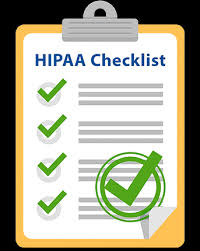As digital transformation accelerates in healthcare, cybersecurity compliance with HIPAA (Health Insurance Portability and Accountability Act) is more critical than ever. Healthcare providers, insurers, and their business associates handle massive amounts of sensitive data — making them prime targets for cybercriminals. A single misstep in HIPAA compliance could lead to devastating data breaches, financial penalties, and loss of trust.
To help you stay compliant, we’ve created a comprehensive HIPAA cybersecurity checklist that covers technical, administrative, and physical safeguards.
What Is HIPAA and Why Does It Matter?
HIPAA is a U.S. federal law enacted in 1996 that mandates national standards for protecting sensitive patient health information (PHI). Organizations that must comply with HIPAA include:
-
Hospitals and clinics
-
Health insurance companies
-
Healthcare clearinghouses
-
Business associates (vendors with access to PHI)
Non-compliance can result in:
-
Civil penalties of up to $1.5 million per year
-
Criminal charges for intentional violations
-
Reputational damage and legal consequences
More info:
🔗 HIPAA Compliance Guide – HHS.gov
HIPAA Cybersecurity Compliance Checklist (2025)
The HIPAA Security Rule requires organizations to implement three categories of safeguards:
-
Administrative Safeguards
-
Technical Safeguards
-
Physical Safeguards
Let’s break each down:

1. Administrative Safeguards
These involve policies, procedures, and personnel management to ensure security.
Conduct a Risk Assessment
-
Identify vulnerabilities, threats, and risks to PHI.
-
Assess likelihood and impact.
-
Update annually or when major changes occur.
🔗 Risk Assessment Tool – HHS.gov
Implement a Security Management Process
-
Define sanctions for non-compliance.
-
Regularly audit internal activity logs.
-
Track attempted or successful security incidents.
Appoint a HIPAA Security Officer
-
Designate an individual responsible for managing security measures and compliance.
Employee Training and Awareness
-
Train all employees on HIPAA rules, phishing attacks, data privacy.
-
Conduct drills and simulated attacks.
Manage Business Associate Agreements (BAAs)
-
Ensure contracts with third-party vendors outline data security obligations.
-
Verify that BAAs are HIPAA-compliant and up to date.
2. Technical Safeguards
These protect electronic PHI (ePHI) using technology.
Access Controls
-
Unique user IDs and role-based access
-
Auto log-off mechanisms
-
Emergency access procedures
Audit Controls
-
Track access and activity in systems storing ePHI.
-
Use automated logging tools for real-time analysis.
Data Encryption
-
Encrypt ePHI both in transit and at rest using AES-256 or similar.
-
Use VPNs or secure web protocols (HTTPS, SSL/TLS).
Two-Factor or Multi-Factor Authentication (MFA)
-
Add layers of verification beyond usernames/passwords.
-
Especially vital for remote access or cloud systems.
✔️ Automatic Session Timeout
-
Systems should log users out after periods of inactivity.
✔️ Transmission Security
-
Prevent unauthorized access to ePHI transmitted over networks.
-
Use secure file transfer protocols and end-to-end encryption.
🏥 3. Physical Safeguards
These involve physical access to data systems, devices, and facilities.
✔️ Facility Access Controls
-
Limit and log physical access to areas with ePHI (server rooms, workstations).
-
Use ID badges, keycards, or biometric access.
✔️ Workstation Security
-
Position workstations away from public view.
-
Use screen privacy filters and auto-locking.
✔️ Device and Media Controls
-
Inventory all devices (laptops, USBs, external drives).
-
Implement policies for reuse, disposal, or destruction of media with PHI.
✔️ Secure Mobile Devices
-
Require encryption on smartphones/tablets.
-
Disable storage or set up remote wipe capabilities.
Additional HIPAA Best Practices
Regular Penetration Testing and Vulnerability Scans
-
Identify and fix weaknesses before attackers exploit them.
-
Scan for misconfigurations, outdated software, and open ports.
🔗 NIST Cybersecurity Framework
🛑 Implement Intrusion Detection/Prevention Systems (IDS/IPS)
-
Use tools like Snort, OSSEC, or AlienVault to monitor threats.
🧹 Patch Management
-
Update software and systems regularly.
-
Automate patches to prevent delay-induced vulnerabilities.
🔒 Secure Cloud Storage
-
Choose HIPAA-compliant cloud service providers (e.g., AWS, Microsoft Azure).
-
Ensure BAAs are in place and encryption is used end-to-end.
📊 Documentation and Audit Readiness
You must maintain detailed records of:
-
Risk assessments
-
Training sessions
-
Breach response logs
-
Policies and procedures
HIPAA mandates that records be kept for at least 6 years from the date they were created or last in effect.
🔗 HIPAA Audit Protocol – HHS.gov
📢 HIPAA Breach Notification Rule
If a breach of unsecured PHI occurs:
-
Notify affected individuals within 60 days
-
Notify HHS if 500+ individuals are impacted
-
Report smaller breaches annually
Failure to report can lead to additional penalties and public listing on the HHS “Wall of Shame.”
🔗 Breach Reporting Portal – HHS.gov
🚨 Common HIPAA Violations to Avoid
-
Using unsecured messaging/email to share PHI
-
Leaving PHI on printers or public screens
-
Sharing login credentials
-
Storing PHI on personal devices
-
Delayed breach reporting
Stay compliant by reviewing violations regularly and updating staff policies accordingly.
🔍 HIPAA Compliance Software Tools
Here are some tools that help automate and manage compliance:
-
Compliancy Group – HIPAA compliance tracking and guidance
🔗 Visit Compliancy Group -
Accountable HQ – Automates risk assessments and BAAs
🔗 Visit Accountable HQ -
Paubox – HIPAA-compliant encrypted email
🔗 Visit Paubox -
Vanta – Real-time HIPAA and SOC 2 monitoring
🔗 Visit Vanta

📘 Summary HIPAA Cybersecurity Checklist
| Category | Key Action Items |
|---|---|
| Administrative | Risk assessments, staff training, BAAs |
| Technical | Encryption, MFA, audit logs, access controls |
| Physical | Secure workstations, device inventory, facility control |
| Ongoing Compliance | Documentation, patching, breach notification, audits |
Conclusion
Achieving HIPAA cybersecurity compliance is a continuous process, not a one-time task. As technology and threats evolve, your defenses and policies must evolve too. By following this 2025 cybersecurity compliance checklist, you can protect your patients, earn their trust, and avoid costly penalties.
If you’re unsure where to start, consider working with a HIPAA compliance expert or using a software solution to streamline the process.
Stay protected, stay compliant.
🔗 Learn more from the official resource:
HIPAA Security Rule – HHS.gov






